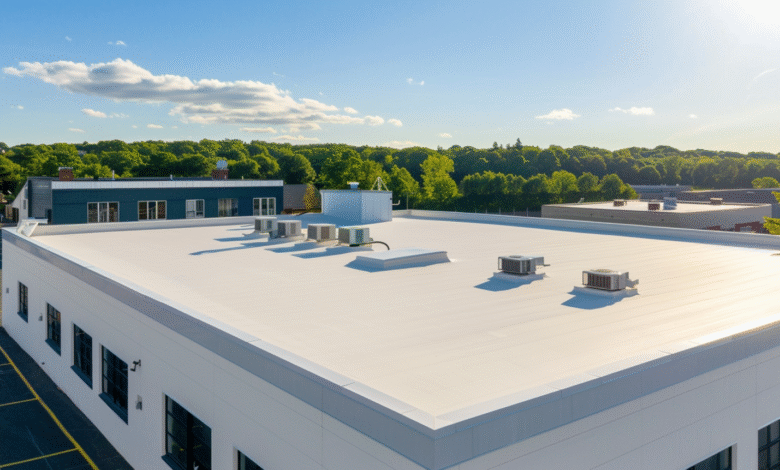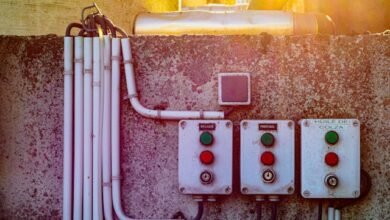Why Commercial Roofs Matter

The role of a commercial roof often goes underappreciated until a problem arises. Every square foot of a roof represents a crucial protective barrier above valuable equipment, essential business operations, and the people who keep a company running. A compromised roof can instantly jeopardize safety and bring productivity to a halt—sometimes even forcing a shutdown until extensive repairs are made. Data from industry sources suggests that water intrusion is a leading cause of expensive property loss, and many such incidents can be traced back to overlooked roof issues.
Proactive strategies are crucial for mitigating risks before costly emergencies arise. Additionally, seeking the expertise of trusted professionals from Delta Innovative Services can provide much-needed support when maintenance or unexpected roof challenges occur. When the proper measures are in place, businesses can operate with greater confidence, knowing their assets and teams are secure beneath a well-protected roof.
Even minor signs of failure—such as a water stain or an unexplained drip—can indicate much larger, underlying issues. These small problems can lead to business interruptions, inventory damage, or health hazards, such as mold growth. The root causes are often preventable. By prioritizing routine care and expert intervention, business owners can avoid the serious consequences that come from deferred maintenance or a “wait and see” approach.
Frequent Causes Of Roof Damage
Commercial roofs face a gauntlet of potential threats daily, and understanding these threats is key to long-term durability. Among the most common culprits are storm-related impacts such as high winds, hail, and flying debris, all of which can physically damage roofs and remove or tear protective flashings. Poor installation practices present another frequent challenge, often introducing weak points that may remain hidden until adverse weather conditions expose them. Inadequate drainage systems can further exacerbate the problem, as persistent standing water degrades surfaces, accelerates the aging of waterproofing materials, and increases the risk of leaks.
- Storm damage: Periods of intense wind, hail, or rain test the limits of commercial roofing materials, sometimes producing punctures invisible to the untrained eye.
- Drainage issues: Clogged or insufficient drainage systems trigger “ponding,” where water sits on the roof for hours or days, hastening material deterioration.
- Poor installation: Even with top-quality materials, a rushed or careless installation job can introduce vulnerabilities that manifest as leaks or membrane failures.
- Ponding water: This is particularly common on flat roofs that lack sufficient slope, resulting in continuous moisture exposure.
- HVAC issues: Rooftop units require regular servicing, and improperly flashed or sealed penetrations for cables and pipes are frequent sources of leaks.
- Neglect: Infrequent inspections and deferred repairs transform minor cracks or seam gaps into significant damage over time, ratcheting up eventual costs.
Staying aware of these typical trouble spots enables the development of a maintenance plan focused on prevention rather than just reaction.
How Weather Puts Roofs At Risk
Commercial roofs endure relentless exposure to the elements—all year, every year. Severe storms can compromise even the strongest roofs long before they reach the end of their expected lifespan. Hail and wind are especially damaging, but rapid freezes, intense heat, and temperature swings all take a toll.
Seasonal transitions bring other risks. Freezing and thawing can cause seams to open and adhesives to break down, while heat waves may lead to surface buckling or material shrinkage. In snow-prone regions, ice damming and weight buildup introduce unique stresses that can sometimes exceed the structural design load. No roof is immune, but diligent attention to installation quality, regular inspections, and rapid repair after extreme weather can significantly reduce vulnerability.
Foot Traffic And Roof Wear
Many commercial roofs double as work platforms, granting access to HVAC units, antenna arrays, or maintenance equipment. However, increased foot traffic escalates the risk of damage, as repeated pressure can compress insulation layers, dislodge ballast, or abrade membranes. Service technicians moving heavy tools or dragging equipment can easily introduce small tears or holes, creating instant pathways for water intrusion.
Adequate roof protection involves:
- Installing purpose-built walkway pads or traction mats in high-traffic areas to shield sensitive materials.
- Limiting access to authorized personnel trained to recognize and avoid damaging roof components.
- Routinely inspecting pathways, especially near roof penetrations, for early signs of wear or impact.
The Role Of Roof Maintenance
Proactive, well-documented maintenance is the cornerstone of commercial roof longevity. Most experts agree that the best approach involves biannual inspections—once in late fall and again in early spring—plus extra checks after major storms or hefty use. Professional inspectors are trained to spot trouble before it becomes evident indoors, scanning for issues such as ponding, membrane separation, failed flashings, and blocked drains.
Maintenance tasks should also include removing leaves, debris, and other obstructions from drainage paths. Keeping gutters and downspouts clear protects against water buildup. Documenting each inspection with photos and logs adds another layer of security by tracking a roof’s condition over time and providing vital records in the event of an insurance claim.
For owners and facility managers, committing to regular care protects not only the roof but also the broader investment in the property and operations housed beneath it.
Key Signs Of Commercial Roof Damage
- Brown or yellow water stains on interior ceilings and walls.
- Bubbling, blistering, or cracking visible on the roof surface.
- Loose, torn, or missing flashing at perimeter edges and equipment bases.
- Persistent standing water more than 48 hours after a storm.
- Unexpected spikes in energy bills due to lost insulation or moisture intrusion.
Recognizing these red flags early provides a chance to intervene before widespread water damage occurs. Leaks may start as nuisances, but left unresolved; they pose risks to structural integrity, valuable inventory, and the bottom line. Educating teams about these warning signs fosters a culture of vigilance and quick response.
Proactive Prevention Tips
- Schedule semi-annual roof inspections with detailed reports and photo documentation.
- Remove leaves, debris, and any buildup from gutters and drains monthly or after storms.
- Address tears, punctures, or open seams immediately with professional repair techniques.
- Install and maintain designated walkway pads to focus foot traffic and reduce accidental membrane damage.
- Keep a running maintenance log that records both findings and completed repairs to establish patterns over time.
- Train internal staff to identify leaks, new stains, or roof clutter, thereby creating an early warning system for emerging issues.
Adopting these prevention strategies means less downtime, more predictable expenses, and far fewer unwelcome surprises. Leaders in commercial property management have found these routines invaluable for maintaining operational continuity.



